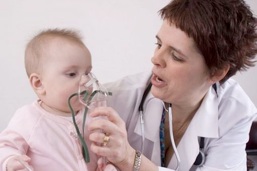How to live with it



MANAGEMENT
Close, ongoing clinical follow-up is essential, and treatment must be individualized depending upon the specific clinical course of a given patient [36]. Daily chest physiotherapy is important in compensating for diminished or absent mucociliary clearance. Treatment with nebulized recombinantDNase has been claimed to lessen coughing and decrease sputum volume [37] and should be tried, but the effectiveness of DNase and other mucolytic drugs such as acetylcysteine is debatable [38].
Liberal use of antibiotics, even during mild bouts of respiratory infection, is also recommended. Intravenous antibiotics may be required for treatment of Pseudomonas aeruginosa infection, or in cases of severe pneumonia from other bacterial etiologies [12,36]. Early and definitive treatment of respiratory infections may prevent or delay the evolution of bronchiectasis and minimize the progressive loss of lung function that is otherwise noted [12]. Smoking probably causes a more rapid deterioration in lung function, and counseling regarding smoking cessation is essential. (See "Overview of smoking cessation").
Surgical interventions to treat middle ear disease, maxillary sinusitis, and nasal polyposis may be necessary in a subset of patients. The value of tympanostomy is questionable because otitis tends to be chronic. Polypectomy and partial turbinectomy, on the other hand, affect a more long-lasting outcome. Conductive hearing loss should be sought, and hearing aids prescribed as required.
Surgical intervention for bronchiectasis can be beneficial when the disease is localized, although chronic bronchitis obviously will not be cured by the operation [39,40]. Bilateral lung transplantation is the therapy of choice in patients with end-stage respiratory insufficiency, although heart-lung transplantation or a modified surgical procedure is required in patients with situs inversus [41,42]. (See "Indications; selection of recipients; and choice of procedure for lung transplantation" and see "Heart-lung transplantation").
Because ciliary immotility (or dysmotility) commonly is associated with abnormal sperm motility, male patients should be informed about possible infertility, and semen analysis should be offered. In vitro fertilization techniques, particularly intracytoplasmic sperm injection, have been effective in this setting [43]. (See "Evaluation of male infertility" and see "Treatment of male infertility").
Persons with primary ciliary dyskinesia generally live an active life and have a normal lifespan. The rate of decline of lung function is much slower than that with cystic fibrosis, and situs inversus is usually not combined with other congenital malformations [44,45]. With physiotherapy, appropriate antibiotic treatment, and abstinence from smoking, the prognosis is generally favorable, although subsets of patients exhibit a more rapid decline.
References
36. Ellerman, A, Bisgaard, H. Longitudinal study of lung function in a cohort of primary ciliary dyskinesia. Eur Respir J 1997; 10:2376.
37. ten Berge, M, Brinkhurst, G, Kroon, AA, de Jongste, JC. DNase treatment in primary ciliary dyskinesia – assessment by nocturnal pulse oximetry. Pediatr Pulmonol 1999; 27:59.
38. Stafanger, G, Garne, S, Howitz, P, et al. The clinical effect and the effect on ciliary motility of oral N-acetylcysteine in patients with cystic fibrosis and primary ciliary dyskinesia. Eur Respir J 1988; 1:161.
39. Smit, HJM, Shreurs, AJM, Van den Bosch, JMM, Westermann, JJ. Is resection of bronchiectasis beneficial in patients with primary ciliary dyskinesia?. Chest 1996; 109:1541.
40. Mossberg, B, Afzelius, B, Camner, P. Mucociliary clearance in obstructive lung diseases. Correlations to the immotile cilia syndrome. Eur J Respir Dis Suppl 1986; 146:295.
41. Tkebuchava, T, Niederhauser, U, Weder, W, et al. Kartagener's syndrome: Clinical presentation and cardiosurgical aspects. Ann Thorac Surg 1996; 62:1474.
42. Miralles, A, Muneretto, C, Gandjbakhch, I, et al. Heart-lung transplantation in situs inversus. A case report in a patient with Kartagener's syndrome. J Thorac Cardiovasc Surg 1992; 103:307.
43. von Zumbusch, A, Fiedler, K, Mayerhofer, A, et al. Birth of healthy children after intracytoplasmic sperm injection in two couples with male Kartagener's syndrome. Fertil Steril 1998; 70:643.
44. Corkey, CWB, Levison, H, Turner, JAP. The immotile cilia syndrome. Am Rev Respir Dis 1981; 124:544.
45. Kollberg, H, Mossberg, B, Afzelius, BA, et al. Cystic fibrosis compared with the immotile-cilia syndrome. A study of mucociliary clearance, ciliary ultrastructure, clinical picture and ventilatory function. Scand J Respir Dis 1978; 59:297.